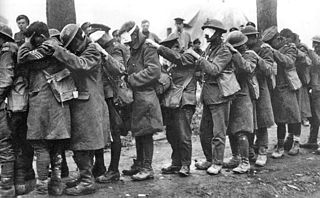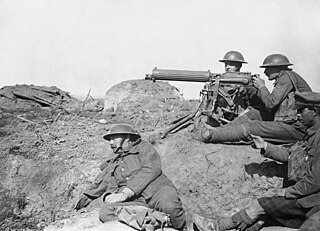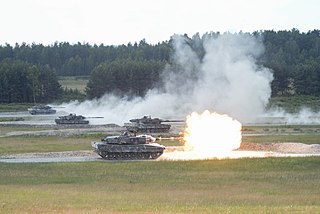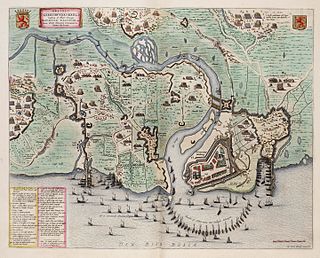
The use of toxic chemicals as weapons dates back thousands of years, but the first large scale use of chemical weapons was during World War I. They were primarily used to demoralize, injure, and kill entrenched defenders, against whom the indiscriminate and generally very slow-moving or static nature of gas clouds would be most effective. The types of weapons employed ranged from disabling chemicals, such as tear gas, to lethal agents like phosgene, chlorine, and mustard gas. This chemical warfare was a major component of the first global war and first total war of the 20th century. The killing capacity of gas was limited, with about ninety thousand fatalities from a total of 1.3 million casualties caused by gas attacks. Gas was unlike most other weapons of the period because it was possible to develop countermeasures, such as gas masks. In the later stages of the war, as the use of gas increased, its overall effectiveness diminished. The widespread use of these agents of chemical warfare, and wartime advances in the composition of high explosives, gave rise to an occasionally expressed view of World War I as "the chemist's war" and also the era where weapons of mass destruction were created.

A trench is a type of excavation or depression in the ground that is generally deeper than it is wide, and narrow compared with its length.

Trench warfare is a type of land warfare using occupied fighting lines largely comprising military trenches, in which troops are well-protected from the enemy's small arms fire and are substantially sheltered from artillery. Trench warfare became archetypically associated with World War I (1914–1918), when the Race to the Sea rapidly expanded trench use on the Western Front starting in September 1914.

Technology during World War I (1914–1918) reflected a trend toward industrialism and the application of mass-production methods to weapons and to the technology of warfare in general. This trend began at least fifty years prior to World War I during the American Civil War of 1861–1865, and continued through many smaller conflicts in which soldiers and strategists tested new weapons.

The Atlanta campaign was a series of battles fought in the Western Theater of the American Civil War throughout northwest Georgia and the area around Atlanta during the summer of 1864. Union Maj. Gen. William Tecumseh Sherman invaded Georgia from the vicinity of Chattanooga, Tennessee, beginning in May 1864, opposed by the Confederate general Joseph E. Johnston.

Skirmishers are light infantry or light cavalry soldiers deployed as a vanguard, flank guard or rearguard to screen a tactical position or a larger body of friendly troops from enemy advances. They are usually deployed in a skirmish line, an irregular open formation that is much more spread out in depth and in breadth than a traditional line formation. Their purpose is to harass the enemy by engaging them in only light or sporadic combat to delay their movement, disrupt their attack, or weaken their morale. Such tactics are collectively called skirmishing.
Maneuver warfare, or manoeuvre warfare, is a military strategy which attempts to defeat the enemy by incapacitating their decision-making through shock and disruption.
In desert warfare, the elements can sometimes be more dangerous than the actual enemy. The desert terrain is the second most inhospitable to troops following a cold environment. The low humidity, extremes of heat/cold, and lack of obstacles and wild-life allows the increased use of electronic devices and unmanned aircraft for surveillance and attacks.

Armoured warfare or armored warfare, mechanised warfare or tank warfare is the use of armoured fighting vehicles in modern warfare. It is a major component of modern methods of war. The premise of armoured warfare rests on the ability of troops to penetrate conventional defensive lines through use of manoeuvre by armoured units.

The Battle of Bicocca or La Bicocca was fought on 27 April 1522, during the Italian War of 1521–26. A combined French and Venetian force under Odet of Foix, Viscount of Lautrec, was decisively defeated by an Imperial–Spanish and Papal army under the overall command of Prospero Colonna. Lautrec then withdrew from Lombardy, leaving the Duchy of Milan in Imperial hands.

A square division is a designation given to the way military divisions are organized. In a square organization, the division's main body is composed of four "maneuver," i.e., infantry regimental elements. Other types of regiments, such as artillery, are not "maneuver" units and thus are not considered in the "square," viz, "four" (infantry) regiments scheme. The usual grouping within a division would be to have two infantry regiments grouped together as an infantry brigade. On an organizational chart, and if the entire division were formed up in the field, the two infantry brigades of two infantry regiments each would typically form a square, hence the name. Again, other "supporting" regiments are not considered in this "square" division organization plan.

Shock tactics, shock tactic or shock attack is the name of an offensive maneuver which attempts to place the enemy under psychological pressure by a rapid and fully-committed advance with the aim of causing their combatants to retreat. The acceptance of a higher degree of risk to attain a decisive result is intrinsic to shock actions.

The artillery of World War I, which led to trench warfare, was an important factor in the war, influenced its tactics, operations, and incorporated strategies that were used by the belligerents to break the stalemate at the front. World War I raised artillery to a new level of importance on the battlefield.

The Battle of Chiari was fought on 1 September 1701 during the War of the Spanish Succession. The engagement was part of Prince Eugene of Savoy's campaign to seize the Spanish controlled Duchy of Milan in the Italian peninsula, and had followed his victory over Marshal Catinat at the Battle of Carpi in July. Marshal Villeroi replaced Catinat as commander of the Franco–Spanish–Savoyard forces in the theatre, carrying with him orders from King Louis XIV to push the Imperialists out of Italy.

The Thai–Laotian Border War was a short confrontation between Thai and Laotian forces. It involved a dispute over the map made by French surveyors in 1907 to mark the borders between Siam and French Indochina in the southern Luang Prabang Range. Ownership of the village of Ban Romklao on the border of Phitsanulok Province and three small border villages on the edge of Uttaradit Province was left unclear. This is the same map underlying the Cambodian–Thai border dispute. The agreed criterion for determining ownership was the natural watershed, but the French map makers at times ignored this.

The siege of Amiens was a siege and battle fought during the Franco-Spanish War (1595-1598) and the Anglo-Spanish War (1585–1604) between 13 May and 25 September 1597. The Spanish, who had sent a large army in March, had captured the city of Amiens easily in a ruse. Henry IV of France, after the surprise of the capture, immediately and quickly built up an army which included a large English force and besieged Amiens on 13 May.

A battlefield, battleground, or field of battle is the location of a present or historic battle involving ground warfare. It is commonly understood to be limited to the point of contact between opposing forces, though battles may involve troops covering broad geographic areas. Although the term implies that battles are typically fought in a field – an open stretch of level ground – it applies to any type of terrain on which a battle is fought. The term can also have legal significance, and battlefields have substantial historical and cultural value—the battlefield has been described as "a place where ideals and loyalties are put to the test". Various acts and treaties restrict certain belligerent conduct to an identified battlefield. Other legal regimes promote the preservation of certain battlefields as sites of historic importance.

The siege of Grave was a siege that took place between 18 July to 20 September 1602, as part of the Eighty Years' War and the Anglo–Spanish War. The Spanish-held city of Grave was besieged by a Dutch and English army led by Maurice of Orange and Francis Vere respectively. After a siege of nearly two months the city surrendered when a Spanish relief army under Francisco de Mendoza was defeated just outside the city by the besiegers. The defeat was severe enough to cause a major mutiny in the Spanish army.

The siege of Geertruidenberg was a siege of the city of Geertruidenberg that took place between 27 March and 24 June 1593 during the Eighty Years' War and the Anglo–Spanish War. Anglo-Dutch troops under the commands of Maurice of Nassau and Francis Vere laid siege to the Spanish garrisoned city. The siege was unique in that the besiegers used a hundred ships, forming a semicircle in a chain on the Mass river to form a blockade. A Spanish relief force under the command of the Count of Mansfeld was attempted in May but this was defeated and he was later forced to withdraw. Three Governors of the city were killed - after the last fatality and as a result of the failed relief, the Spanish surrendered the city on 24 June 1593. The victory earned Maurice much fame and had thus become a steadfast strategist in the art of war.